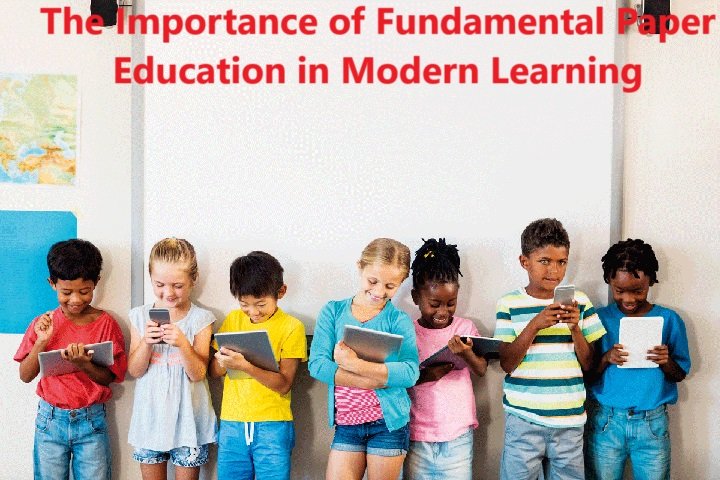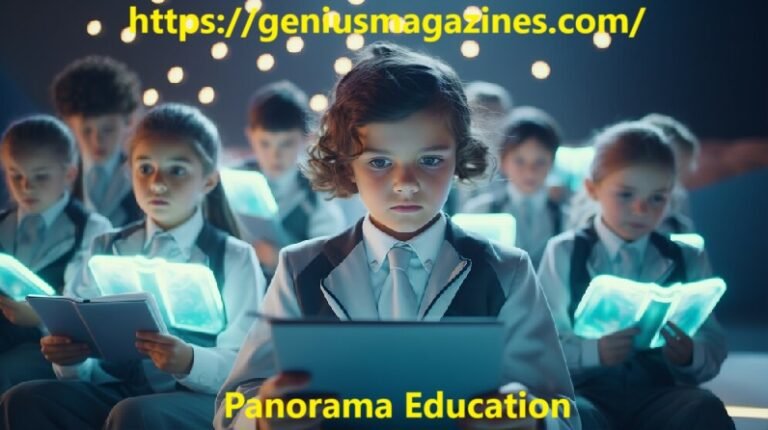
Fundamental Paper Education
Introduction
In the digital age, education has undergone a tremendous transformation. Technology-driven learning methods, such as e-learning platforms, tablets, and smart devices, have significantly changed how students access knowledge. However, amidst this digital revolution, fundamental paper education remains indispensable. While digital tools offer convenience and efficiency, traditional methods, particularly those involving paper-based education, provide unique benefits that contribute to students’ cognitive and intellectual development. This article explores the significance of fundamental paper education, its role in modern learning, and how it can coexist with technology to produce a well-rounded educational experience.
Historical Perspective on Paper Education
Before the advent of technology, fundamental paper education was the bedrock of learning. Books, notebooks, and printed materials were the primary resources for both teachers and students. Educational institutions relied heavily on printed textbooks, paper assignments, and handwritten notes. These resources played a vital role in shaping students’ learning patterns, promoting active participation, and fostering deeper understanding. Even as technological advancements began to emerge, paper-based education retained its relevance due to its simplicity and effectiveness.
The traditional fundamental paper education method emphasizes critical thinking, active learning, and memorization, essential components for intellectual growth. Handwriting, for instance, is a powerful tool that aids memory retention and encourages students to slow down and process information more thoroughly than typing on a computer might. This has laid the foundation for why fundamental paper education is still needed in classrooms, despite the widespread use of digital technology.
The Cognitive Benefits of Fundamental Paper Education
Research supports the idea that fundamental paper education plays a crucial role in cognitive development. One key advantage is its effect on memory retention. Studies have shown that students who write notes by hand retain more information than those who use a keyboard. This is largely because handwriting involves a deeper level of cognitive processing, which helps students to internalize information better. Writing on paper encourages active engagement with the material, as students must summarize, paraphrase, and analyze the content as they write, leading to better understanding and recall.
Additionally, fundamental paper education fosters the development of fine motor skills, which are necessary for writing. These skills are crucial in young learners, as they contribute to hand-eye coordination, muscle control, and dexterity. Through writing exercises, students improve their motor skills while also enhancing their ability to concentrate, focus, and develop patience—traits that are important for both academic success and personal growth.
Another cognitive benefit of fundamental paper education is the reduction of distractions. While digital devices provide immediate access to a vast range of information, they also come with distractions such as notifications, advertisements, and social media. Paper-based education offers a more focused and distraction-free learning environment, allowing students to immerse themselves in their studies without interruptions. This undivided attention contributes to deeper learning and comprehension.
Emotional and Psychological Impact of Paper-Based Learning
In addition to cognitive benefits, fundamental paper education has a positive emotional and psychological impact on students. Writing on paper fosters a sense of accomplishment. When students physically write down their thoughts, ideas, or solutions to problems, they experience a tangible sense of achievement. The act of crossing off tasks, completing handwritten assignments, or reviewing notes provides a rewarding feeling, which can motivate students to continue learning.
Furthermore, fundamental paper education can help reduce stress and anxiety. Many students report that staring at a screen for extended periods can lead to eye strain, headaches, and increased stress levels. Paper-based learning allows students to take a break from screen time, giving their eyes and minds a much-needed rest. This shift can also contribute to improved mental health, as it reduces the pressure to keep up with the fast-paced nature of digital education.
Moreover, fundamental paper education promotes mindfulness and reflection. When students engage in handwritten exercises, they are encouraged to slow down and think more deeply about the material. This reflective process helps students gain insights, draw connections between concepts, and approach problems more thoughtfully. Unlike the often rushed experience of typing or clicking through information, writing on paper fosters a deeper, more deliberate learning experience.
The Role of Paper Education in Modern Classrooms
As modern classrooms increasingly adopt technology-based learning tools, the role of fundamental paper education should not be diminished. Instead, paper-based and digital education methods should complement each other, creating a balanced and effective learning environment.
For example, combining fundamental paper education with technology can enhance the overall learning experience. A teacher may use digital tools to present interactive lessons or provide multimedia content, while students take handwritten notes or complete assignments on paper. This approach allows students to benefit from the advantages of both methods. They can actively engage with dynamic content while also processing and internalizing information through writing.
Additionally, many educational systems recognize the enduring value of paper-based assessments. Exams and standardized tests often require handwritten answers, ensuring that students are still developing essential writing skills. Moreover, paper assignments promote accountability, as they require students to physically hand in their work, which fosters a sense of responsibility.
Challenges and Limitations of Paper Education
While fundamental paper education offers numerous benefits, it also faces several challenges in the modern era. One significant drawback is the cost and environmental impact associated with producing paper materials. As educational institutions aim to become more eco-friendly, the demand for paper-based resources may decrease, especially with the availability of digital alternatives. Schools may find it difficult to justify the continued use of paper when digital tools offer cost-effective, environmentally sustainable solutions.
Another challenge is the potential for inefficiency in managing large volumes of paper materials. Students and teachers alike may find it burdensome to organize and store paper-based assignments, notes, and textbooks. The convenience of cloud storage and digital organization tools often outweighs the manual process of filing and storing paper documents.
Lastly, the transition to remote learning due to the COVID-19 pandemic has accelerated the shift toward digital education. Many students and teachers have become accustomed to using digital tools for online classes, assignments, and communication. In this context, fundamental paper education may seem outdated or less practical, especially in virtual learning environments.
Balancing Paper and Digital Education
Despite these challenges, it is possible to strike a balance between fundamental paper education and digital learning. Hybrid learning models, which incorporate both paper-based and technology-based methods, are becoming increasingly popular. These models provide the flexibility to adapt to different learning styles and preferences, ensuring that all students benefit from a well-rounded educational experience.
For instance, students might complete interactive lessons or research using digital platforms while writing reflections, notes, or outlines on paper. This approach can cater to students who prefer the tactile experience of writing while still incorporating the advantages of digital resources. Additionally, educators can design lesson plans that integrate both mediums, such as using paper for brainstorming activities and technology for research or collaboration.
The Future of Fundamental Paper Education
As we look to the future, the role of fundamental paper education will continue to evolve alongside technological advancements. While digital tools will play an increasingly important role in education, paper-based learning will likely retain its significance in fostering deep cognitive development, emotional well-being, and fine motor skills.
Ultimately, the best approach is one that embraces both traditional and modern methods, recognizing the unique benefits each offers. Fundamental paper education will remain an essential component of learning, serving as a bridge between the tactile, hands-on experiences of the past and the innovative, tech-driven classrooms of the future.
Conclusion
Fundamental paper education holds a unique place in the evolving educational landscape. Despite the rise of digital technologies, paper-based learning continues to offer valuable cognitive, emotional, and psychological benefits. It enhances memory retention, fosters mindfulness, and provides a focused, distraction-free environment for students. Although modern classrooms are increasingly integrating digital tools, balancing paper education with technology is essential to creating a holistic learning experience. As we move forward, the challenge lies in finding ways to combine the strengths of both paper and digital methods to ensure students receive the best possible education.
By acknowledging the value of fundamental paper education and its role in modern learning, educators and students alike can embrace a diverse approach to learning that benefits all.
Read More: Genius Magazines






